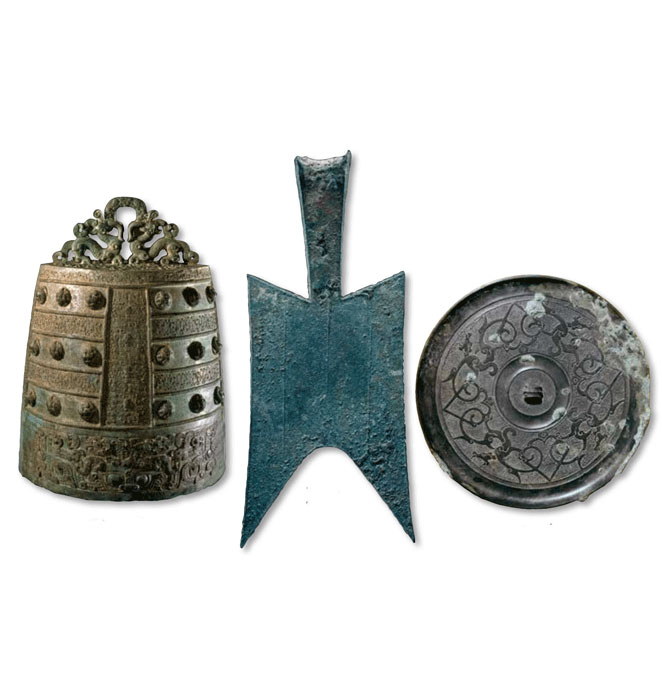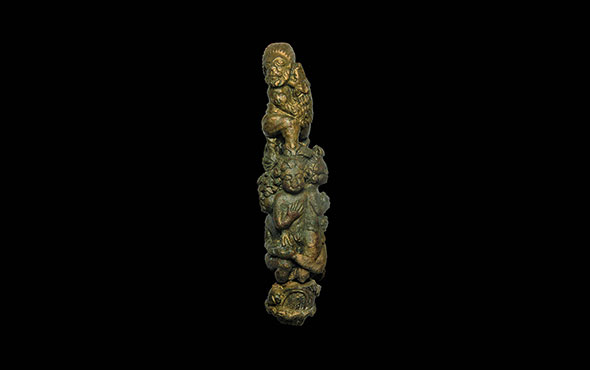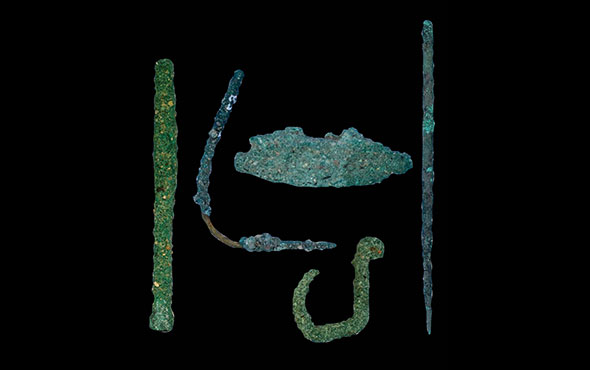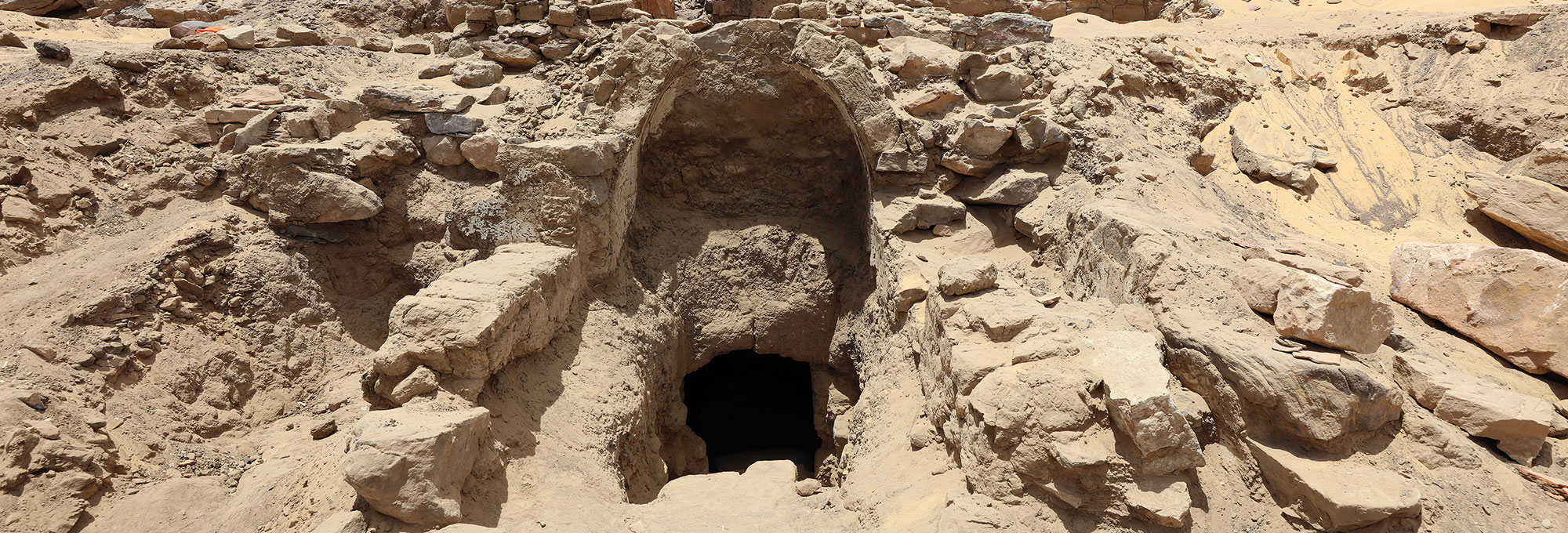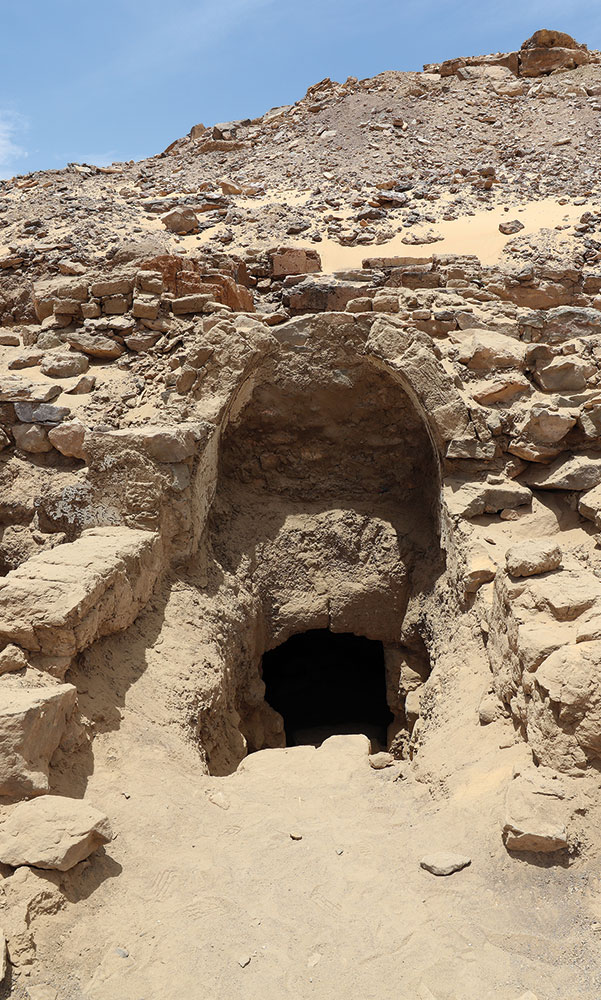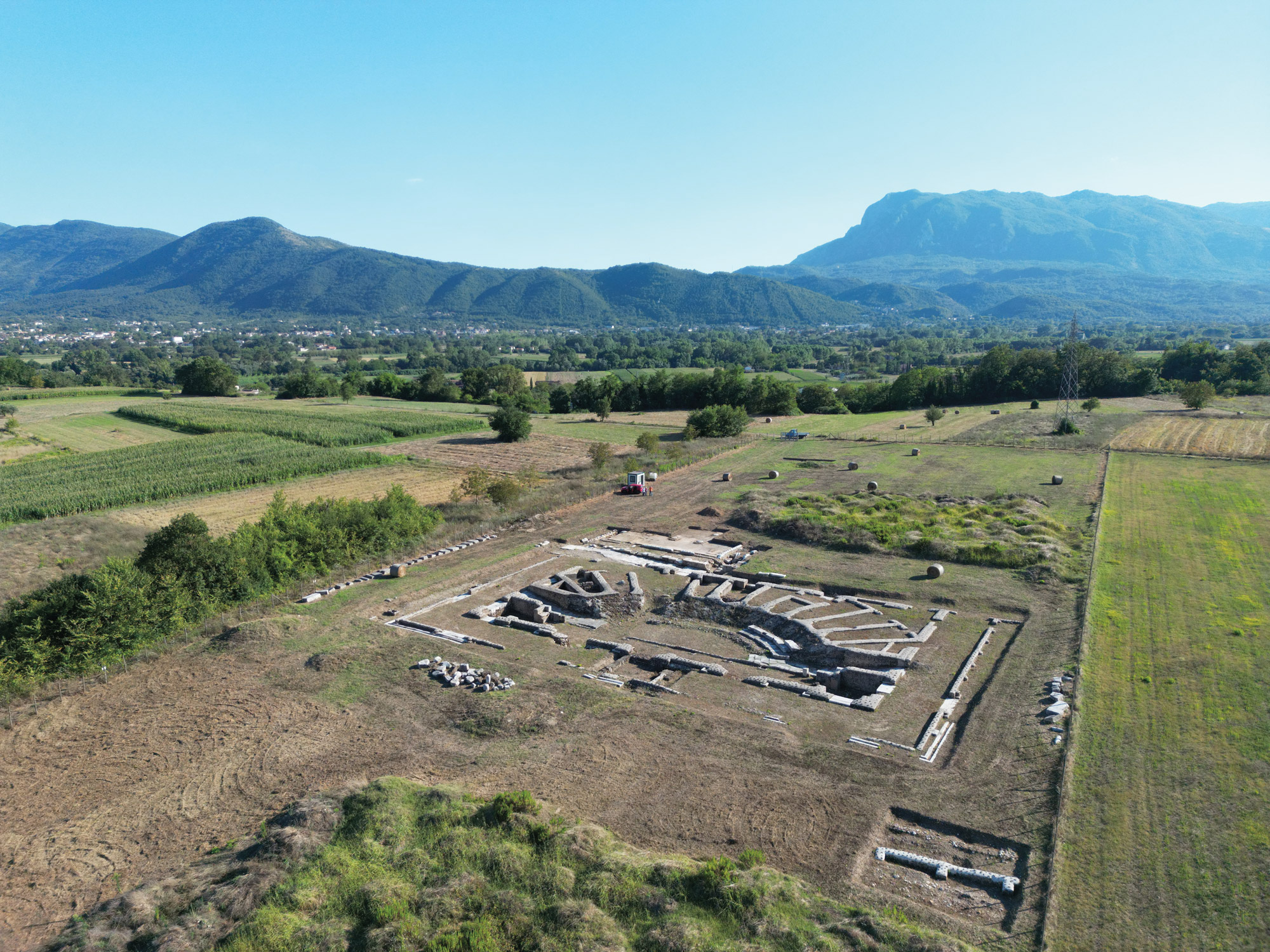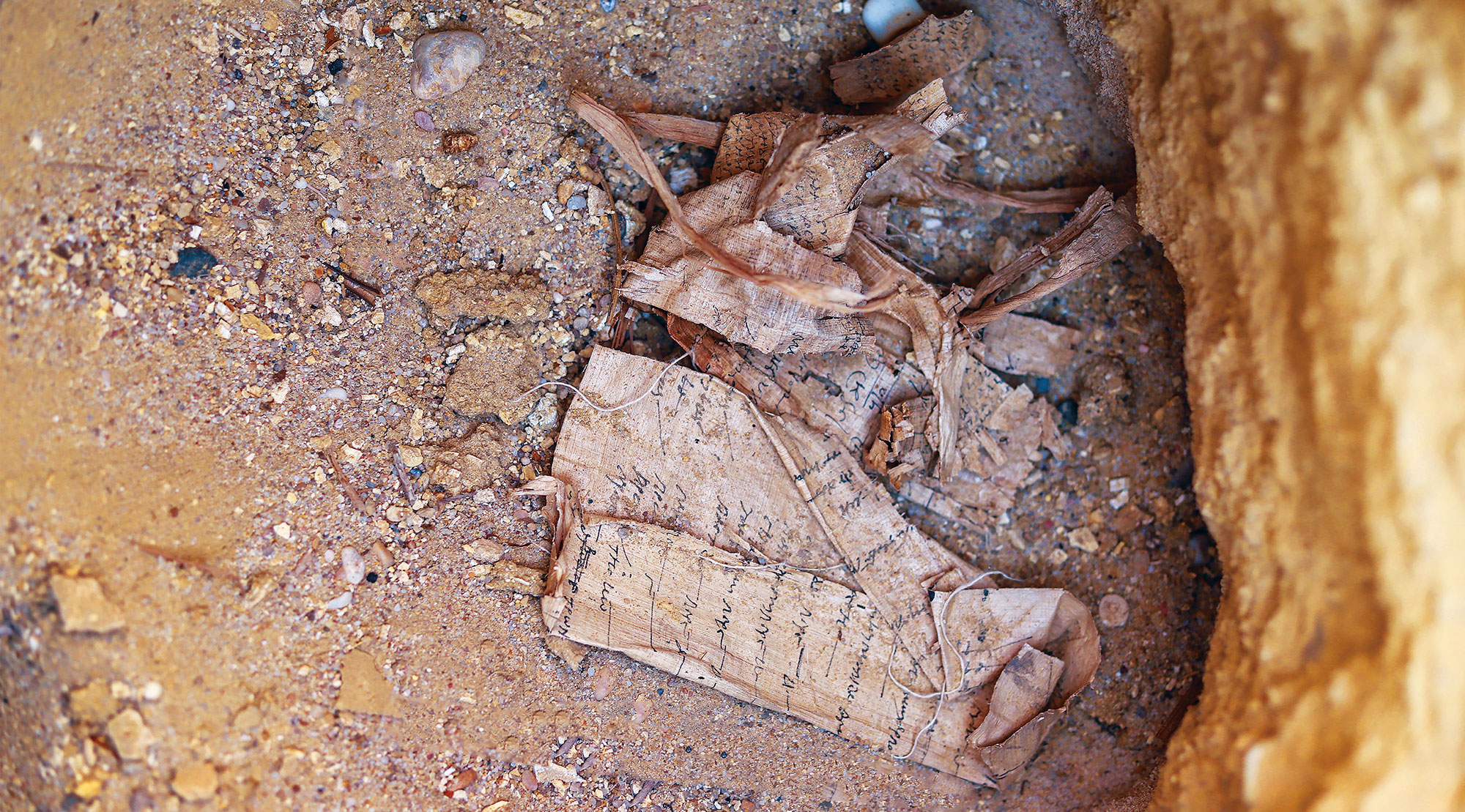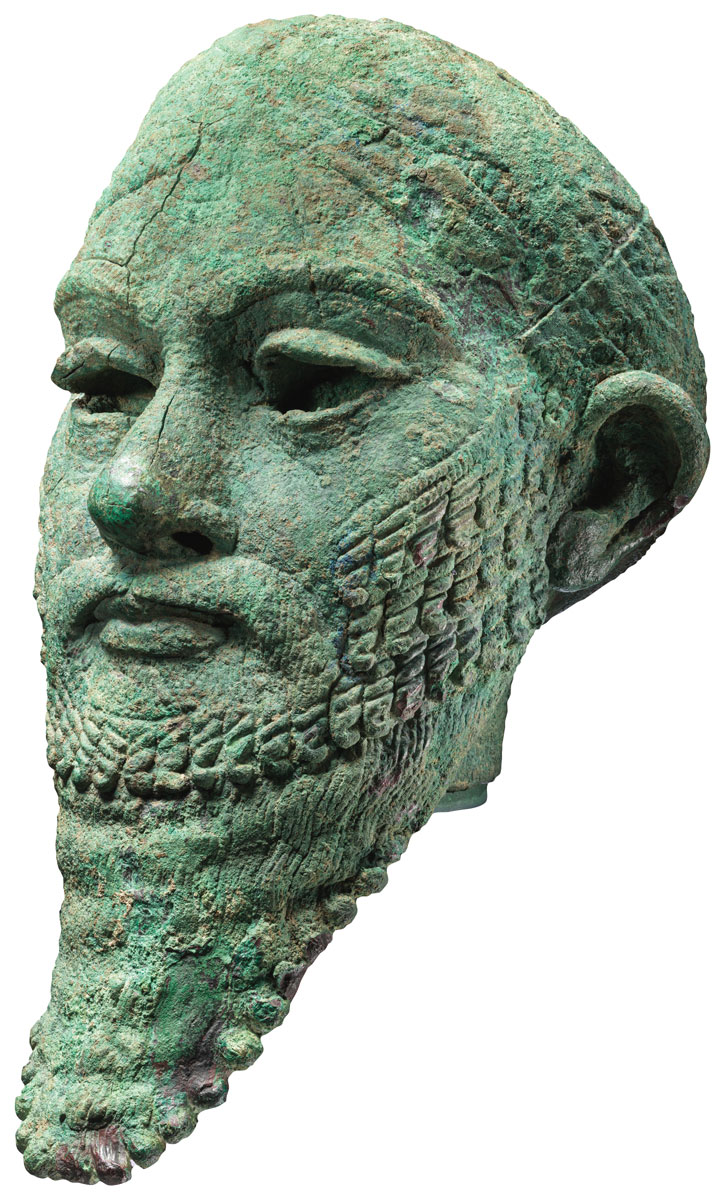
What is it?
Sculpture of a head
Material
Copper alloy
Culture
Mesopotamian
Date
Ca. 2300–2000 b.c.
Dimensions
13.56 inches high
Weight 43 pounds
Found
Mesopotamia
Creating large metal sculptures is risky. Producing and controlling copious amounts of molten metal can involve exposure to dangerous chemicals and heat resulting from the casting process. Furthermore, copper alloys are heavy; for example, the six-foot-tall original cast of The Thinker, by the French sculptor Auguste Rodin, weighs some 2,000 pounds. They can also be difficult to source. The copper used in the massive bronze equestrian statue of the emperor Marcus Aurelius (reigned a.d. 161–180) in Rome likely came from Cyprus, more than 1,000 miles away. But above all, explains conservator Jean-François de Lapérouse of the Metropolitan Museum of Art, it is the finicky nature of metal solidification that makes creating such sculptures so challenging and, in antiquity, required artists to push the envelope of what was technically possible. A recent reexamination of this 4,000-year-old sculpture using X-ray computed tomography has shown that its creators encountered some of the difficulties still faced by metal casters today.

The head likely depicts a Mesopotamian ruler and is one of the earliest known life-size lost-wax metal sculptures to survive. It had been thought that the head was virtually solid, but the recent scanning has revealed that it was cast around a ceramic core that was fixed in place using metal supports. The scans also showed that the sculpture contains many pockets of trapped gas and areas where additional metal was needed to fill gaps in the initial casting. “Casting a sculpture in what appears to have been a poorly vented mold was dicey and resulted in significant flaws that almost doomed a project on which considerable material and artistic resources had already been expended,” says de Lapérouse. “The artist who made the head was probably more accustomed to carving stone and wasn’t experienced with casting metal. But even now, this process is extremely difficult to accomplish successfully.”





